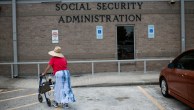After the Everson ruling, the Supreme Court did not hear a single case involving public funding of religion for more than 20 years. Beginning in 1968 and over the next 10 years, however, the high court heard a rapid succession of funding cases, a dozen in all. The increase in funding cases was tied to efforts on the part of some states in the 1960s and 1970s to help inner-city Catholic schools that were struggling with reductions in revenue due to the flight of middle-class Catholic families from urban areas to the suburbs. These schools also had to pay more for teachers because fewer men and women were entering the religious orders that traditionally provided parochial school teachers at relatively low salaries. Faced with decreasing revenue and increasing costs, the parochial schools often could not repair their aging buildings. Looking for financial support, many of these schools turned to state legislatures, some of which, in return, enacted a variety of aid packages.
Almost immediately, however, those who favored strict church-state separation challenged this type of state assistance as a violation of the Establishment Clause. The first such case to reach the Supreme Court was Board of Education v. Allen (1968). It involved a New York state program that required local school boards to loan textbooks at no cost to all public and private school students. Because a substantial majority of the private school students attended Catholic schools, various school boards claimed that the program violated the Establishment Clause.
In a 6-3 decision, the high court held that the program did not violate the Establishment Clause. First, the court argued, the program did not officially favor religious schools because it required school boards to loan textbooks to all students, not just those attending religious schools. In addition, the court stated, the program advanced the legitimate secular purpose of promoting education. Finally, the court said, while religious schools could request whatever books they wanted, the school boards could always turn down requests deemed improper, such as those for religious books.
In a dissenting opinion, Justice Black, who had authored the majority opinion upholding the bus subsidies in Everson, claimed that New York’s textbook loan program was unconstitutional because its primary purpose was to aid parochial schools. Furthermore, he argued, the program would have the effect of promoting religion because parochial school teachers might use the loaned textbooks as part of their religious instruction. In this sense, Black pointed out, New York’s loaned textbooks were unlike bus subsidies, which could not be used for religious purposes. Thus, Black concluded, if the government loaned a book to a religious school that then used the book to teach religion, the government would be responsible for the resulting religious instruction.
Together, the majority opinions in Everson and Allen helped outline a permissible means for the government to support religious schools. The rule derived from these decisions is that the government may provide aid to religious schools as long as the aid is (1) secular in content, such as funding for bus subsidies or secular textbooks; (2) generally available to students in both public and private schools; and (3) primarily directed toward students rather than toward schools.
This route, however, proved to be too limited for many parochial schools, which needed more resources to address their growing fiscal crises. Many state legislatures responded by enacting more robust school aid packages, which included paying teacher salaries, repairing school facilities and providing student tuition.




